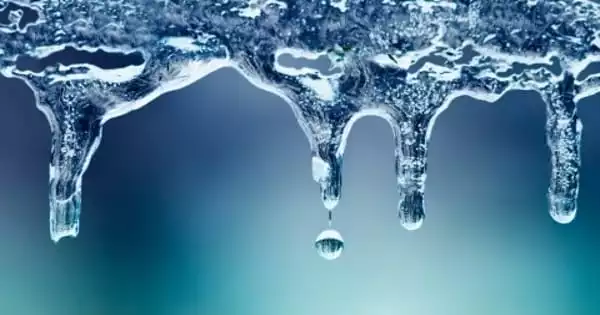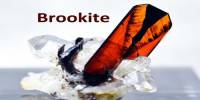The erratic density of water causes odd phenomena that researchers are still investigating. If you stare long enough at your nearest ice-filled drinking glass, you’ll observe that, predictably, the ice melts away. The ubiquitous physical phenomena is as deceptively complex as they are unavoidable, ranging from your last soda binge to glacier melt, which sadly contributes to increasing sea levels.
Liquids typically get denser as they cool. However, at 4° Celsius, freshwater is the densest. The water becomes less thick and rises as it cools below that temperature. As a result, ice columns submerged in liquid water can melt into three various shapes depending on the temperature of the water, according to research published in Physical Review Letters.
Researchers from New York University (NYU) appear to agree since they recently proved how weird the liquid that surrounds our planet truly is. In fact, their study, which was published in the journal Physical Review Letters, demonstrated that while the ice melts as expected when heated to temperatures over its melting point, it’s the manner in which it melts that has scientists intrigued.
“The shapes and patterning of ice are sensitive indicators of the environmental conditions at which it melted, allowing us to ‘read’ the shape to infer factors such as the ambient water temperature,” says Leif Ristroph, an experimental physicist and associate professor at NYU Courant Institute of Mathematical Sciences.
Our findings assist to explain some characteristic features of ice seen in nature, notably the so-called pinnacle morphology of icebergs, which consists of sharp spikes or spires, and the so-called scallops, which consist of wavy patterns of pits.
Leif Ristroph
According to New York University mathematician Leif Ristroph, “almost everything” about the findings was shocking. Ristroph and colleagues anchored ultrapure ice cylinders up to 30 centimeters long in tanks of water ranging in temperature from 2° to 10° C.
When placed in water less than 5° C, the ice melted into smooth, downward-pointing spikes. According to Ristroph, simulations revealed “a weird phenomenon – that the cold liquid water near the ice is actually buoyant” because it is less dense than the rest of the water in the tank. As a result of the upward flow, warmer water is drawn closer to the ice’s base, causing it to melt faster than the top.
Ristroph and his colleagues utilized “clear ice,” or ice free of bubbles and other impurities, to study how they melt in great detail. These custom-made ice cubes were immersed in water tanks, which were then placed within a temperature-controlled “cold room” for the investigation.

Above about 7° C, the opposite happened: the ice formed an upward-pointing spike. Colder water near the ice is denser than surrounding water and sinks, drawing in warmer water at the top of the ice and causing it to melt faster than the bottom, according to simulations. This is consistent with “what your intuition would expect,” according to Ristroph.
The ice melted into scalloped columns at temperatures ranging from 5° to 7° C. “Basically, the water is confused,” Ristroph says, so it develops several layers, some of which rise and others of which sink depending on their density. Eventually, the water organizes into “swirls or vortices of fluid that carve the strange ripples into the ice.”
“The funny bit of physics is that liquid water has an extremely unusual dependency of density on temperature, with a maximum density at roughly 4 degrees C,” Weady explained. “This’density anomaly’ distinguishes water from other fluids.”
To be more specific, the researchers discovered that the same characteristic is at work in their findings. Water manages to flow upward at temperatures close to 4 °C (41 °F), causing the downward-facing spike. Those at temperatures of 7 °C (44.6 °F) and above, on the other hand, produce upward-facing spikes. The two flows compete at the temperatures in between, forming vortices that cut the pits we see as waves and ripples.
“Our findings assist to explain some characteristic features of ice seen in nature, notably the so-called pinnacle morphology of icebergs, which consists of sharp spikes or spires, and the so-called scallops, which consist of wavy patterns of pits,” said Ristroph.
Ristroph and his colleagues believe that their discoveries have implications for understanding larger systems that rely on melting ice, such as Earth’s changing climate. Ristroph went on to say that understanding the physics and math of what happens to ice at lower sizes allows us to comprehend “important components of larger-scale climate models.”
















